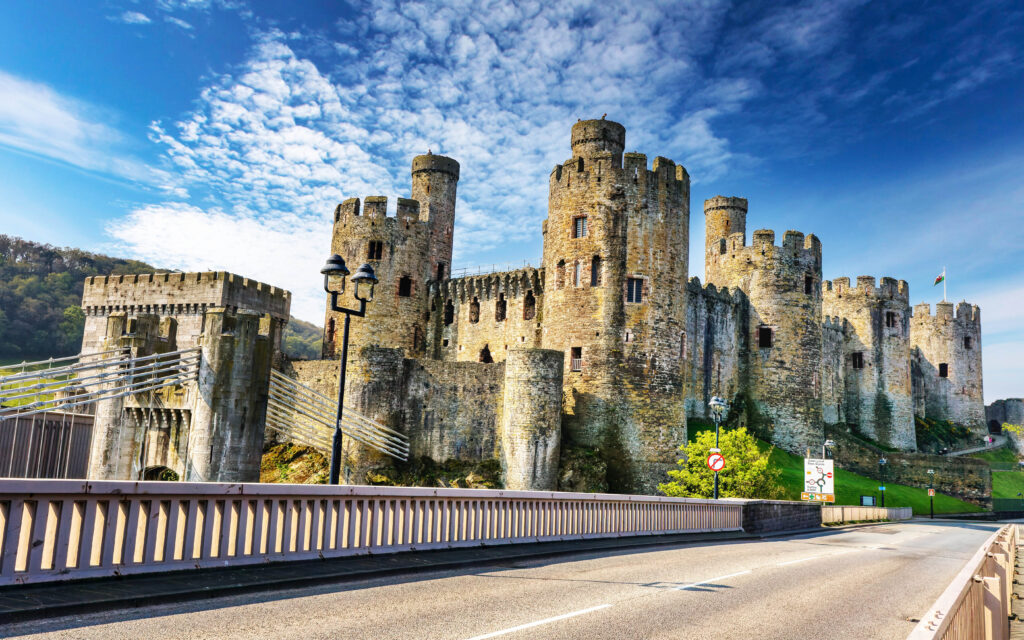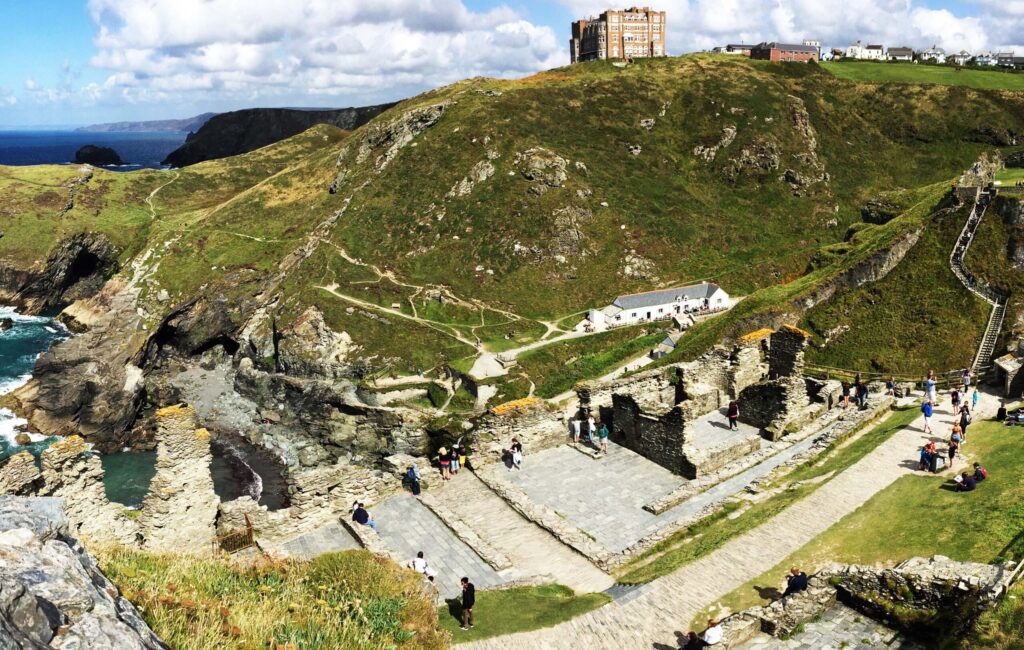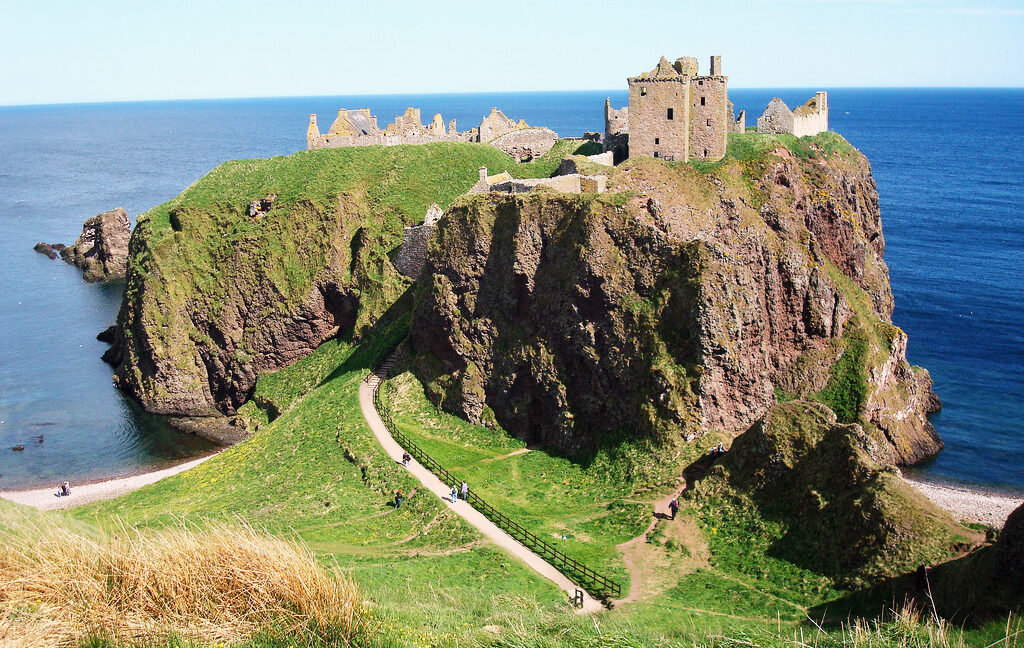
Pack your armor and get ready to slay some castle selfies at castles from Windsor to Wales
Are you looking to immerse yourself in the UK’s rich history and stunning architecture? Why not go castle-hopping?
With its numerous medieval castles and fortresses, the UK offers plenty of opportunities for castle crawlers to explore, from the iconic Windsor Castle to the dramatic ruins of Dunnottar Castle. Each castle has its unique story, from battles and sieges to royal scandals and legends of dragons and knights.
Journey through time as we take you through some of the most fantastic castle-hopping in the UK.
- Edinburgh Castle, Scotland: This castle is one of Scotland’s most popular tourist attractions. Located on a hill in the center of Edinburgh, it offers stunning city views. It is also home to the Scottish Crown Jewels, the Stone of Destiny, and the National War Museum of Scotland.
- Windsor Castle, England: This is the largest inhabited castle in the world and has been the residence of the British monarch for over 900 years. It is a favorite residence of Queen Elizabeth II, who spends many weekends here. The castle has impressive State Apartments, St George’s Chapel, and the famous Round Tower.
- Caernarfon Castle, Wales: This castle is located in the town of Caernarfon in North Wales and was built by Edward I in the late 13th century. It is a UNESCO World Heritage Site with a distinctive polygonal shape and impressive towers and walls. It is also linked to the Prince of Wales, as the Investiture of Prince Charles took place here in 1969.

- Warwick Castle, England: This is one of the most impressive medieval castles in the UK, with a history of over 1,000 years. The castle features a range of attractions, including the Great Hall, the State Rooms, and the dungeons, as well as daily shows and demonstrations.
- Stirling Castle, Scotland: This castle played a crucial role in Scottish history, including the Wars of Independence against England. It is located on a hill in Stirling and offers breathtaking views of the surrounding countryside. It is also home to the Royal Palace, the Great Hall, and the Chapel Royal.
- Dover Castle, England: This is one of the most iconic castles in England, located on the coast of Kent overlooking the English Channel. It has a fascinating history and was used as a military fortress during World War II. Visitors can explore the castle’s underground tunnels and the medieval Great Tower.

- Tintagel Castle, Cornwall: This castle is believed to be the birthplace of King Arthur and is located on the rugged North Cornwall coast. It is a spectacular site, with the ruins of a medieval castle perched on a rocky promontory overlooking the sea.
- Conwy Castle, Wales: This 13th-century castle is one of Europe’s finest examples of medieval military architecture. It was located in North Wales and was built by Edward I to help secure his conquest of Wales. The castle is now a UNESCO World Heritage Site, and visitors can explore the towers, walls, and great hall.
- Bamburgh Castle, England: This castle is located on the Northumberland coast and was once the seat of the kings of Northumbria. It has a long and fascinating history, with evidence of human settlement on the site dating back to prehistoric times. Visitors can explore the castle’s state rooms and enjoy stunning coastline views.

- Dunnottar Castle, Scotland: This ruined medieval fortress is on a cliff overlooking the North Sea in Aberdeenshire. It was once a strategic stronghold and played a crucial role in Scottish history. Visitors can explore the castle ruins and enjoy the dramatic views.
- Bodiam Castle, England: This 14th-century castle is located in East Sussex and is surrounded by a moat. It is one of the most picturesque castles in the UK, with a beautiful exterior and impressive tower. Visitors can explore the castle’s interior, including the great hall and the chapel.
- Urquhart Castle, Scotland: This ruined castle is located on the banks of Loch Ness in the Scottish Highlands. It was once a stronghold of the Scottish Crown and played a vital role in the Wars of Independence. Visitors can explore the castle ruins.
Did you know?
Dover Castle was used as a military command center and underground hospital during World War II? The castle’s extensive network of tunnels and underground chambers, known as the Secret Wartime Tunnels, housed the command center for Operation Dynamo, which was responsible for evacuating British and Allied soldiers from Dunkirk.
The tunnels were also used as a hospital, with over 200 beds, a surgical room, and a mortuary. Today, visitors can explore the tunnels and learn about the castle’s role during the war.
A little history:
Castles are an iconic feature of the UK’s landscape and essential to the country’s history. Castles were first introduced to the UK by the Normans, who invaded in 1066. They quickly built castles throughout England and Wales to secure their newly acquired lands and establish their power.
These castles were typically made of wood and earth, but over time, they were replaced with stone structures that were more durable and offered better protection.
Throughout the Middle Ages, castles played an essential role in the political and military history of the UK. They were often the site of battles and sieges, and many castles were built strategically to defend against invasion or rebellion.
Some of the most famous castles in the UK, such as Edinburgh Castle and the Tower of London, have served as royal residences and have played a vital role in the country’s monarchy.
As time passed and the need for fortifications diminished, many castles were abandoned or fell into disrepair. In the 19th and 20th centuries, there was a renewed interest in the country’s historic architecture, and many castles were restored or renovated for use as museums, hotels, or private residences.


